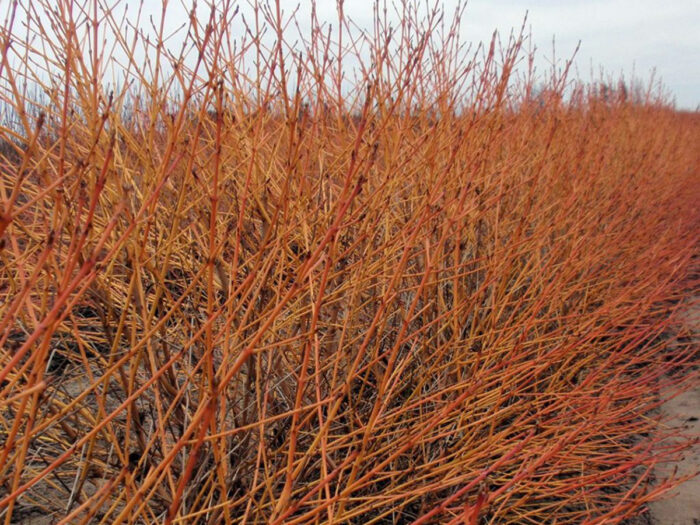
I see winter as beginning with the first falling leaf and ending with the first sign of new growth. That can be a very long stretch in the Northern Plains if our gardens do not provide something of interest during those many months. Evergreen foliage is an easy solution, but there are many other parts of plants that can delight us as well. Here are some of my favorite trees and shrubs to provide some drama and life during winter.
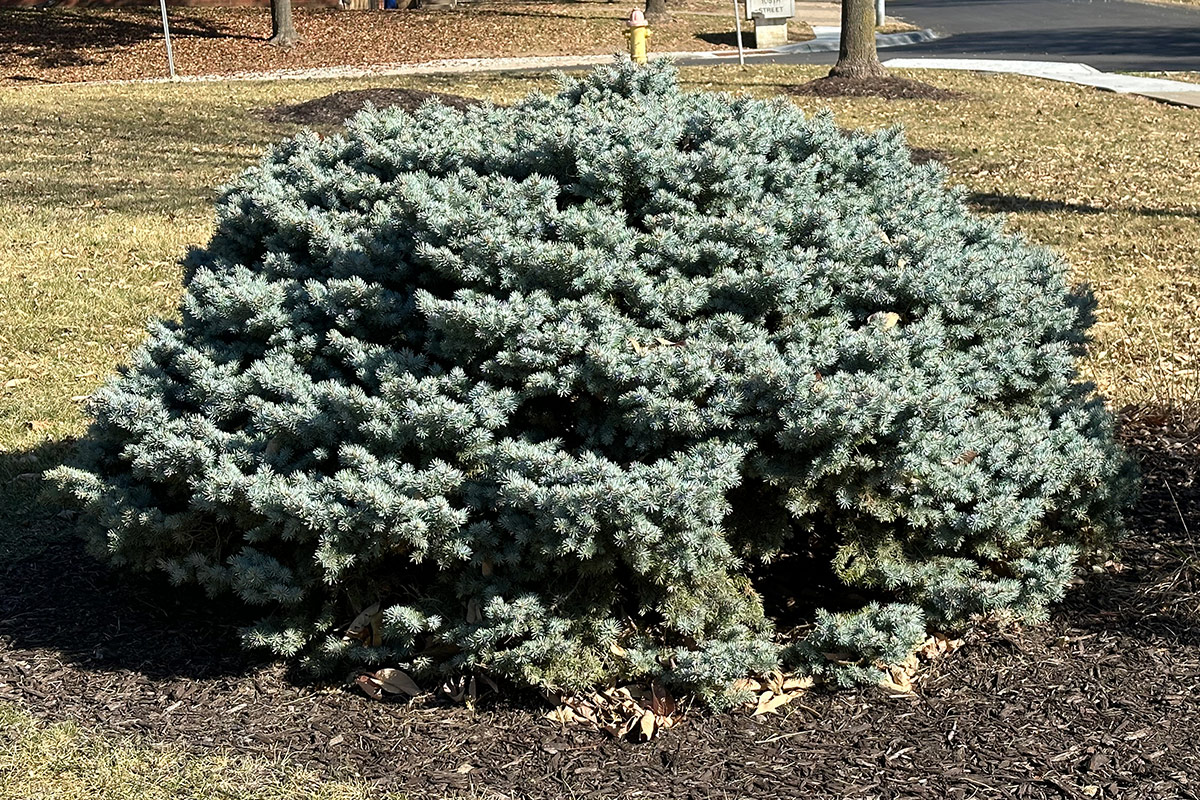
‘Glauca Globosa’ blue spruce features colorful, evergreen foliage
You cannot dismiss the power of smaller evergreens in garden displays. As a designer, I think it’s important to include structural plants in a design, or things get very boring and bleak from October through March. Conifers and broadleaf evergreens can provide this structure by virtue of their consistent appearance. ‘Glauca Globosa’ blue spruce (Picea pungens ‘Glauca Globosa’, Zones 2–7) is striking in any landscape but should be placed thoughtfully, as it is not one that can easily be pruned to fit in a smaller space. Growing slowly to 3 to 5 feet high and 5 to 6 feet wide, it can be purchased in a low, mounding, shrubby form or grafted into a tree form.

Panicle hydrangeas stun with sculptural faded flowers
Texture is an important element in every garden. It is possible to provide texture during the off-season by leaving the large dried flowerheads of plants with showy blooms standing. Panicle hydrangeas (Hydrangea paniculata and cvs., Zones 3–9) have some of the most spectacular faded flowers of all. Cultivars such as Little Lime® (‘Jane’), Puffer Fish™ (‘NCHP1’), and Little Hottie® (‘Bailpanone’), all of which grow 3 to 5 feet tall and wide, are well suited for most gardens. Growing on sturdy stems, the blooms are held high through the summer and fall, drying to a light tan tone. Leaving these undisturbed until spring rewards you with a large mound of bold texture.
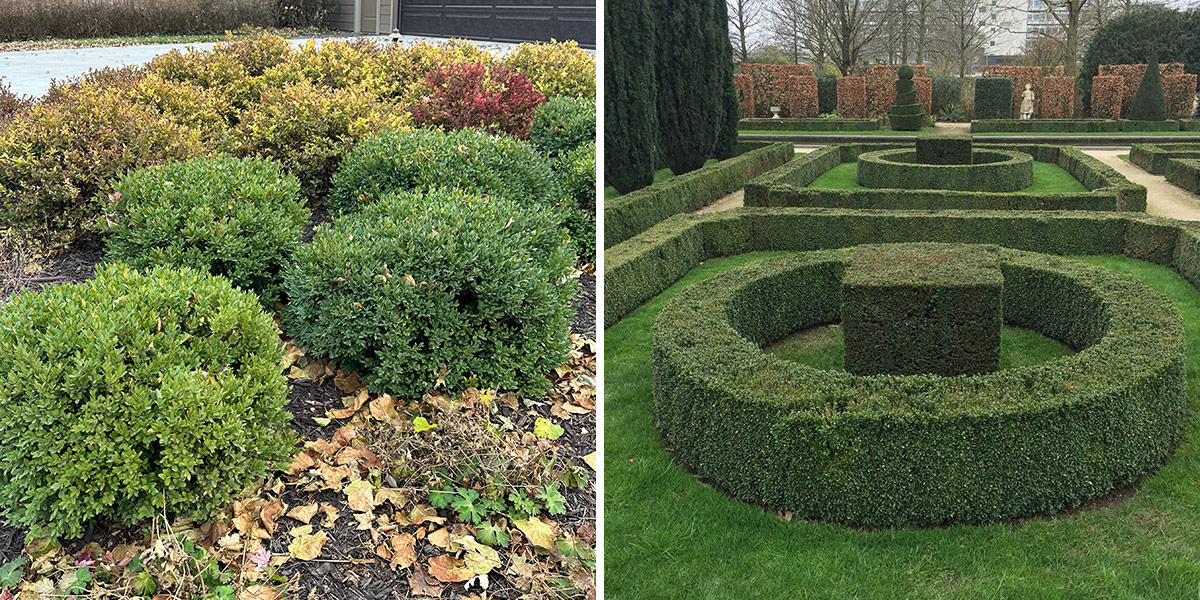
Boxwoods are beloved for their evergreen foliage and year-round structure
One of my favorite plants, ‘Green Velvet’ boxwood (Buxus ‘Green Velvet’, Zones 4–9) provides multiple opportunities for interesting forms that are especially noticeable in winter. Additionally, boxwoods that have been manipulated into crisp hedges or topiaries are striking in every season but truly pack a punch during winter. Apart from ‘Green Velvet’, consider trying ‘Green Gem’ boxwood (Buxus ‘Green Gem’, Zones 4–9) or Northern Charm™ boxwood (Buxus ‘Wilson’, Zones 4–9). These both grow 3 to 4 feet tall and wide if left unpruned. For something larger, ‘Green Mountain’ boxwood (Buxus ‘Green Mountain’, Zones 4–9) can reach as tall as 6 feet, providing even more opportunities for sculptural pruning.
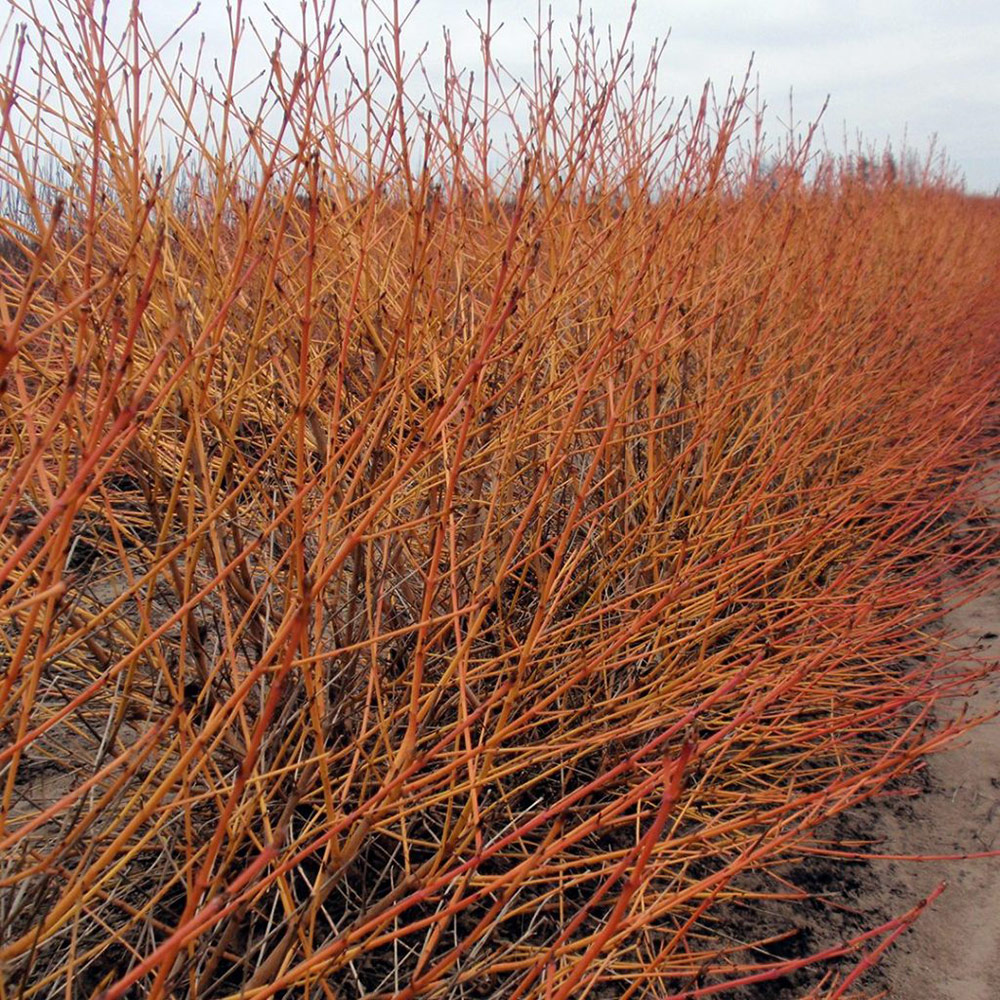
Bloodtwig and yellowtwig dogwoods wow with their colorful bark
Bright and vibrant bark is always appreciated during winter months. Certain dogwood species (Cornus spp. and cvs., Zones 3–9) are well known for their vibrant stems and have long been staples in many gardens. Some of the most spectacular winter color can be found in newer introductions, such as Arctic Sun® bloodtwig dogwood (Cornus sanguinea ‘Cato’, Zones 4–8). This plant grows 3 to 4 feet tall and has golden stems tipped in red; it’s at its most beautiful when backlit by the sun. ‘Bud’s Yellow’ yellowtwig dogwood (Cornus sericea ‘Bud’s Yellow’, Zones 3–7) is another contender, reaching 6 to 8 feet tall. In my opinion, it has the brightest yellow bark of all the shrub-form dogwoods. Plant it in masses or in front of a dark wall or fence. These shrubs create bold displays of color whether you are graced with snow or not. Annual removal of no more than one-third of the old growth will keep your shrub-form dogwoods full of vibrantly colored stems.
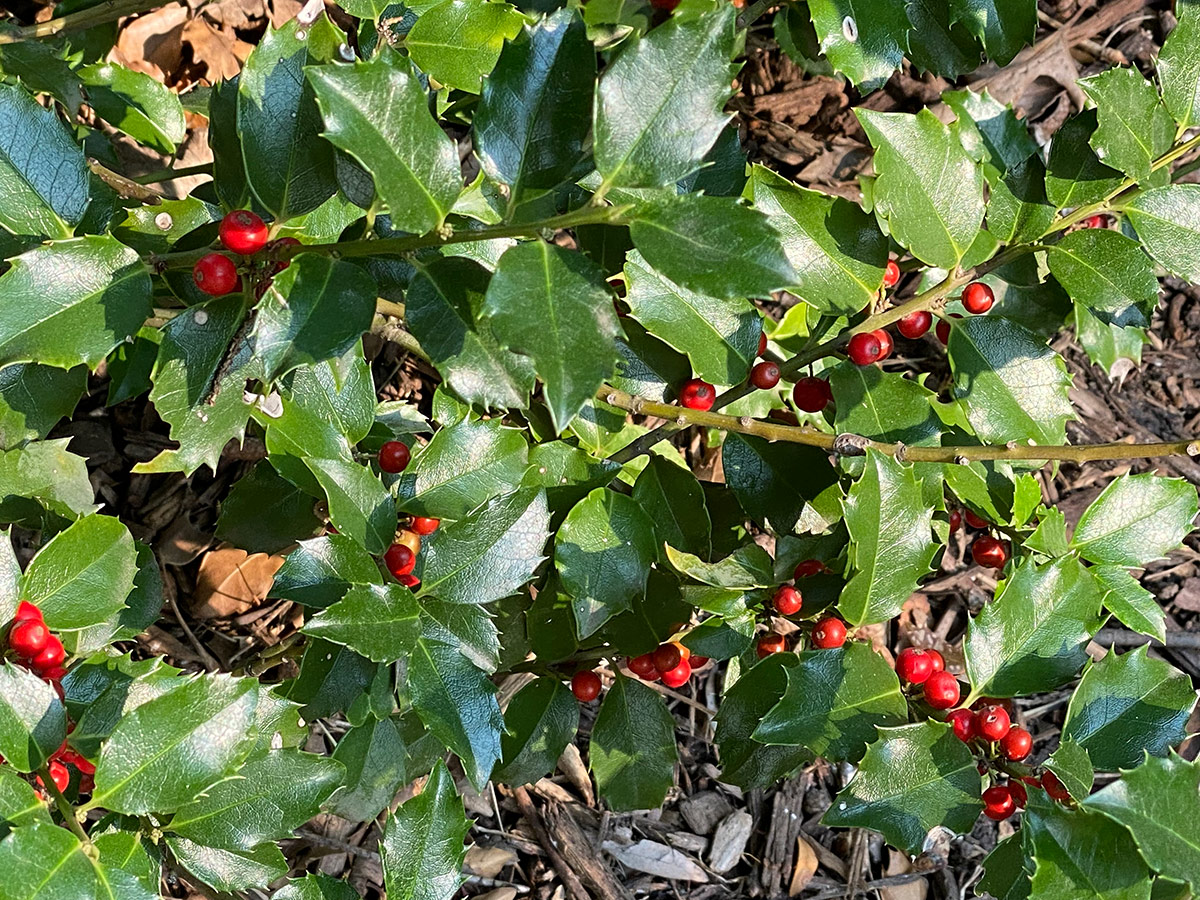
Blue holly’s vivid berries contrast with its tinted foliage
Blue holly (Ilex × meservaea, Zones 4–7), also called Meserve holly, is a spectacular shrub with glossy bluish-green foliage. ‘Blue Princess’ and ‘Blue Prince’ are the cultivars commonly used in my area. Both male and female plants are required if one wants to see the bright red berries in winter. If the dark, shiny foliage is all you desire, either plant will do the trick. Reaching 4 to 6 feet tall and wide in the Northern Plains, holly does best if given some protection from harsh winds and intense sun.
Protect your broadleaf evergreens from damage
Winter burn can occur in severe weather on broadleaf evergreens. A coating of antidesiccant can help prevent this. You can also plant these evergreens in an area protected from excess winds. Make sure they go into winter well-watered, and provide additional moisture when temperatures are unseasonably warm. Clip out any damage in the spring before new growth emerges.
As you gaze out your windows this winter, make note of where you wish there was something more interesting to see, and make your plan to improve the view.
For more on winter interest, check out:
- Deciduous Trees for Winter Interest in the Northern Plains
- Compact Conifers for the Northern Plains
- Late-Winter and Early-Spring Bloomers for the Northern Plains
And for more Northern Plains regional reports, click here.
—Marti Neely, FAPLD, owns and operates Marti Neely Design and Associates in Omaha, Nebraska.


















Comments
Log in or create an account to post a comment.
Sign up Log in